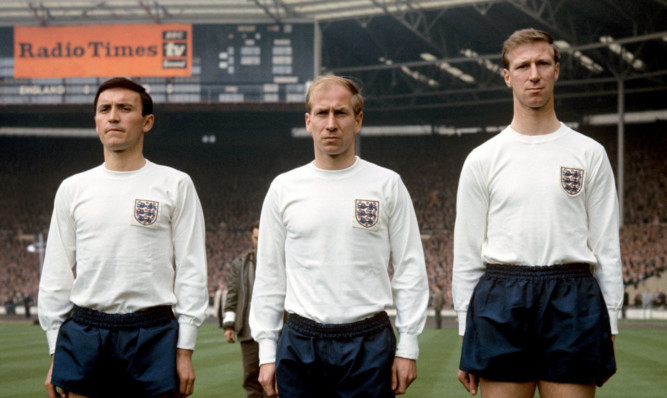
Fifty years ago Alf Ramsey re-wrote history when he selected Jack Charlton to start for England alongside his brother Bobby against Scotland at Wembley, writes John Barrett.
They weren’t the first siblings to appear together for England Frank and Fred Forman of Nottingham Forest had done that in 1899 but they were certainly the most successful.
Fifteen months later, of course, they starred together as England won the World Cup.
In all, 20 sets of brothers have played for England, most recently the Nevilles, Gary and Phil.
Like the Charltons, the Nevilles actually lined up in the same team.
The only other England brothers to do that were Leslie and Denis Compton, though that was in wartime internationals in 1944.
The Charlton brothers, however, were the most successful, winning 141 England caps between them and scoring 55 goals.
Bobby, the younger of the two, was an England player at 20, scoring on his debut in a 4-0 win against Scotland at Hampden in 1958.
He finished at the Mexico World Cup with 106 caps to his name and is generally viewed to be the greatest England player of all time.
Jack was 29 when Ramsey chose him for the big Wembley clash with the Scots on April 10, 1965.
He spent the first 12 years of his career mostly in the Second Division with Leeds United.
But the success of Don Revie’s team in their first season after winning promotion to the top flight in 1964 catapulted the big centre-half known as “The Giraffe” because of his long neck into international contention.
A crowd of more than 98,000 saw him line up at centre-half with brother Bobby on the left wing.
England went 2-0 up after a downpour.
However, they were holding on at 2-2 after losing Ray Wilson to one injury and having Johnny Byrne hobbling around with another.
Bobby filled in at left-back for the stricken Wilson.
The brothers played together for England 28 times, both of their international careers concluding in June, 1970.
While Bobby’s playing days were the more illustrious, Jack was to go on to be the more successful manager.
Bobby tore up no trees in his single job as boss at Preston, while Jack had a good record with Middlesbrough, Sheffield Wednesday and Newcastle and also took the Republic of Ireland to their first World Cup, where they reached the last eight.

Enjoy the convenience of having The Sunday Post delivered as a digital ePaper straight to your smartphone, tablet or computer.
Subscribe for only £5.49 a month and enjoy all the benefits of the printed paper as a digital replica.
Subscribe